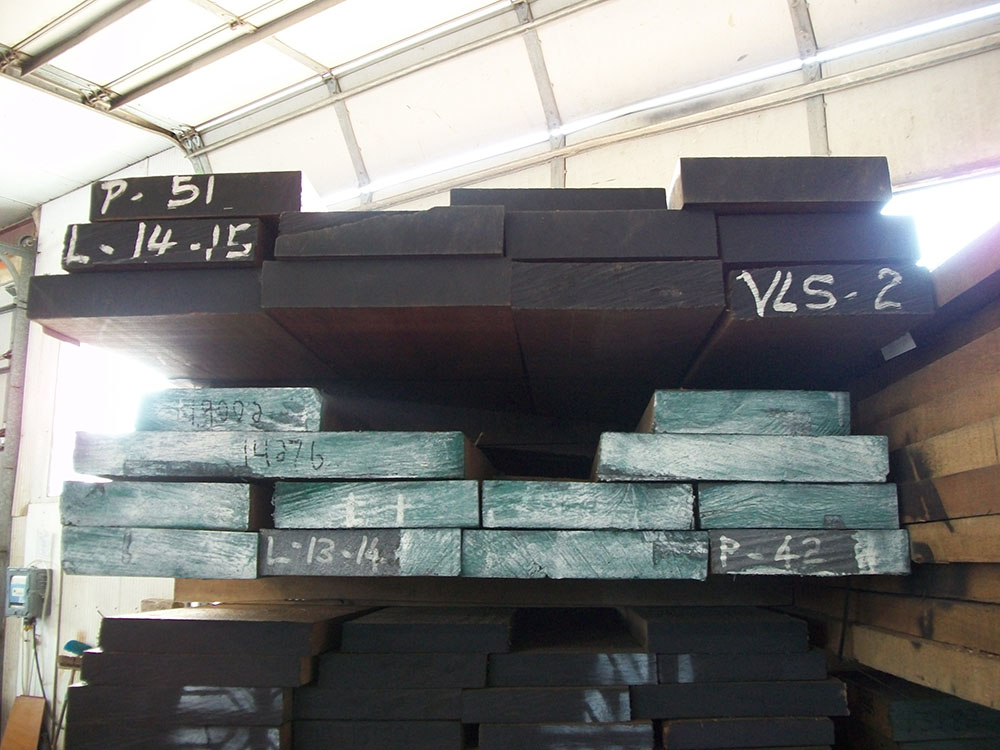Currently in Stock — Call to Order 952-446-9611
Phillipine Mahogany:
Widths vary from 9” to 12” | Lengths from 10’ to 20’
[themify_hr color=”light-gray” width=”100%” border_width=”1″ ]
4/4 = 1” 6/4 = 1 1/2” 8/4 = 2”
Thickness x width x length, divided by 144 = Board Feet.
[themify_hr color=”light-gray” width=”100%” border_width=”1″ ]
PHILIPPINE MAHOGANY
8/4 Phillipine Mahogany
COST -Call for Today’s Pricing
$9.08 bd. ft.
Lumber Available by Special Order – Call 952-446-9611
Apitong: The heartwood is pinkish-brown to dark brown and often has a purple tint. Straight interlocked grain and medium texture, Apitong is fairly easy to work with. Due to resin content, care is required when varnishing but takes stain well. Origin: Philippines. Common uses: Decking and flooring.
Bubinga: Bubinga often has a wavy grain and sometimes highly figured. The sapwood is pale yellow which is truly a contrast from the dark reddish brown with black streaks of the heartwood. Easy to work with. Origin: Africa. Common uses are: inlays, furniture, and cabinetry.
Honduras Mahogany: Can vary between pale pinkish brown to a dark reddish brown. Medium in texture and very easy to work with. Finishes and turns well. Common uses are: furniture, cabinetry, musical instruments and boat-building. Origin of Honduras Mahogany: Central and South America.
Meranti: Meranti is reddish brown in color and commonly with white resin streaks present. Meranti is course in texture and the grain can be interlocked. Moderately easy to work with and glues and finishes well. Common uses: Plywood, furniture, and boat-building.
Sapele: Nearly always shows a pronounced interlocked grain which yields a beautifully regular stripe figure when quarter sawn or sliced. It is also seen occasionally with wavy grain which will lead to a mottle or fiddleback figure. The heartwood is durable in regards to decay but can be susceptible to insects. Sapele can be difficult to work when using planing or routing tools but glues and finishes well. Commonly uses are: Furniture, veneer, flooring, trim and millwork, boat building and turned objects. Origin of Sapele: Africa.
Spanish Cedar: Spanish Cedar is uniform in color ranging from pink to reddish brown. The wood darkens with age, and commonly is straight grained with a medium texture. Spanish Cedar is moderately durable to insect attack, also weathers well. Easy to work with both hand and machine tools. Due to its softness, Spanish Cedar can leave a blurry surface if not machined with very sharp cutters. The texture and gum pockets which remain can make finishing a challenge. Common uses are: Veneer, plywood, cabinetry, and boat building. Spanish Cedar origin: Native to Central, South America and the Caribbean.
Teak: The heartwood is golden to medium brown and darkens with age. Highly durable Teak can be easy to work with but can have a blunting effect on cutting edges. Origin: Grown on plantations, widely throughout tropical regions of Africa, Asia and Latin America. Common uses are: Ship and boat-building, furniture, carvings and turnings.
Additional lumber also available by special order: Call 952-446-9611
Anegra
Bloodwood
Ebony Gabon
European Beach
Goncalo Alves
Iroco
Jatoba
Khaya
Koa
Lacewood
Madrone
Madore
Marado (Bolivian Rosewood)
Obeche
Padouk
Peruvian Walnut
Purple Heart
Santos Mahogany
Sitka Spruce
Sycamore
Yenge
Yellowheart
Ziricote
